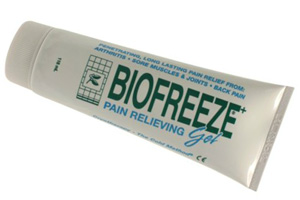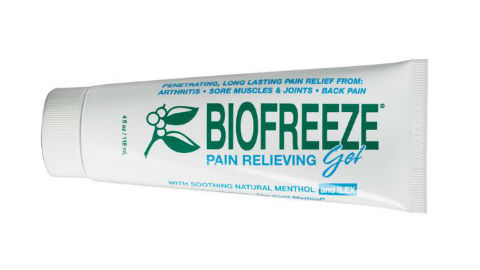 Your feet are incredible. Yes, yours! Think about it: 28 bones, 33 joints, 19 muscles and 107 ligaments in each foot and, when working well in harmony, will support many long hours on the pedals. But they do take a pounding with each ride and many cyclists, whilst taking good care of quads, calves, knees and more, shamefully neglect the lower extremities. Cyclo thought it high-time we redressed the balance by taking a looking at three common and relatively easy to treat conditions (Bursitis, Plantar Fasciitis, Sesamoiditis) that, if ignored, can not only end a ride but a whole season.
Your feet are incredible. Yes, yours! Think about it: 28 bones, 33 joints, 19 muscles and 107 ligaments in each foot and, when working well in harmony, will support many long hours on the pedals. But they do take a pounding with each ride and many cyclists, whilst taking good care of quads, calves, knees and more, shamefully neglect the lower extremities. Cyclo thought it high-time we redressed the balance by taking a looking at three common and relatively easy to treat conditions (Bursitis, Plantar Fasciitis, Sesamoiditis) that, if ignored, can not only end a ride but a whole season.
Bursitis
Helping to reduce friction between muscles, tendons and bones, the bursae are small sacks filled with synovial (yolk-like) fluid. Bursitis occurs when these become inflamed and whilst in cyclists this can occur around the knee it is also relatively common both under the foot around the Achilles tendon at the heel. Causes vary, but generally over-exercise or a sudden increase in miles ridden can be a factor (as can over-tight, poorly fitted shoes). Pain, particularly around the front, underside of the foot can range from a dull-aching throb to sharp sudden stabbing pain this may not become apparent on a ride but often afterwards, particularly after sitting for a long time or first thing next morning once out of bed.
A simple ice-pack or coolant bandage works well and Non-Steroidal Anti-Inflammatory drugs (often abbreviated to NSAID, and including the likes of Ibuprofen) quickly relive pain. Opt for a cream NSAID rather than tablets as the gentle massage act of rubbing in also helps recovery. More serious bursitis can be treated professionally with steroid injections – a painful but very effective solution to long-term inflammation.
Plantar Fasciitis
Like Bursitis, Plantar Fasciitis is both an inflammation and over-use injury but affecting the plantar fascia, the thick band of fibrous connective tissue, similar to a ligament, that runs from under the heel to the ball of the foot. Often starting as a dull ache along the middle part and arch of the under-foot, plantar fasciitis can develop into sharp stabbing pain that feels like stepping on sharp stones. Again, as with Bursitis, poorly fitted shoes can be a cause but the switch to rigid cleated shoes can also contribute so it can be advisable to make the transition gradually. Ice-packs and NSAIDs will help relieve pain and a reduction in the miles cycled until the problem has resolved is advisable. Massaging the sole of the foot gently with either a sports massage oil or foot cream helps to speed recovery too.
Sesamoiditis
Certainly one of the lesser known (but no less common) cycling complaints affects the sesamoids, two small pea-sized bones under the main joint of the big toe. Seasmoids are unusual in that they are not connected to other bones by joints but rather embedded in soft tissue (a little like the knee), they can become inflamed and even rupture under the stresses of cycling. Inflammation will cause a general aching pain that may come on slowly, but a direct rupture/fracture, will cause an immediate shooting pain under the big toe. Swelling and even bruising can become evident and difficulty bending the big toe can be a sign of Sesamoiditis. If you suspect a fracture then professional help needs to be sought immediately (and a brief ‘retirement’ from cycling likely) but simply inflammation should be controllable with ice-packs and, again, NSAIDs. Reduce your miles and intensity of training until fully recovered.
General Foot Care
You will have noticed that with all of the above conditions both ice and NSAIDs are broadly speaking the solution. Cyclists can do well to observe the so-called RICE regime – Rest, Ice, Compression and Elevation – for an impressively wide range of injuries and complaints with the use of Non- Steroidal creams used for dealing with pain and a wise addition of an extra ‘R’ (making it RICER) with the final letter standing for ‘Referral to a doctor’ is things don’t improve or if you are not entirely certain of what is wrong.
Cyclo Top Tips
Feet get hot and can swell on a long ride. Leave them bare immediately afterwards.
Peppermint foot cream can be the ideal post-ride pamper.
Bruising to the sole and heel can be treated with arnica cream and topical (applied to the skin) Ibuprofen can reduce swelling.
Use a ribbed, spindle foot roller to massage the soles of the feet and help treat minor plantar fasciitis.
Carefully pick cycling shoes. Have them properly fitted and check for wear and tear.
Make the transition to cleated shoes gradually.
Make sure your bike fits and is always properly adjusted to you.
The above is strictly intended as general advice and in no way constitutes professional medical opinion. Always consult your GP, physio or other healthcare professional.
 It’s a fact that the quicker an injury can be treated the better and invariably with muscle pulls, strains and aches that treatment will begin with cooling. Of course in the real world, and particularly out on the road, access to an ice-pack is limited which is where Biofreeze Gel may well comes in.
It’s a fact that the quicker an injury can be treated the better and invariably with muscle pulls, strains and aches that treatment will begin with cooling. Of course in the real world, and particularly out on the road, access to an ice-pack is limited which is where Biofreeze Gel may well comes in.

